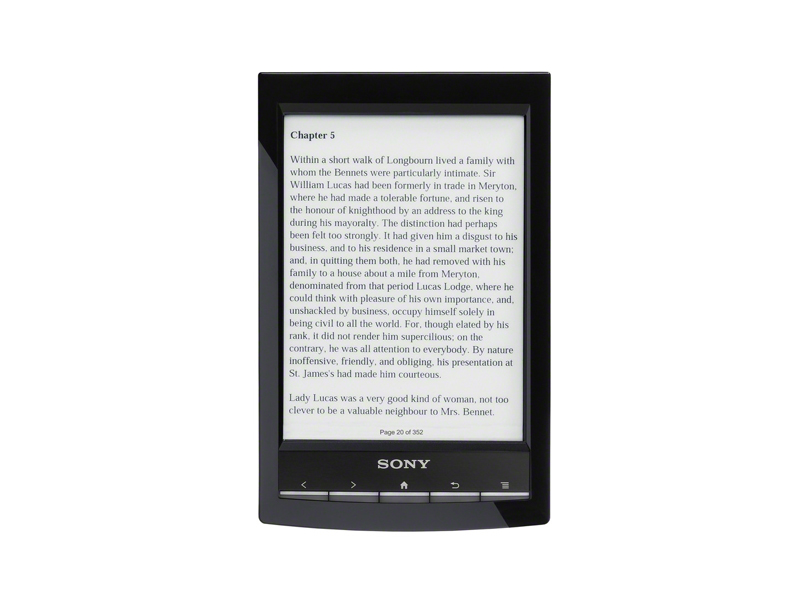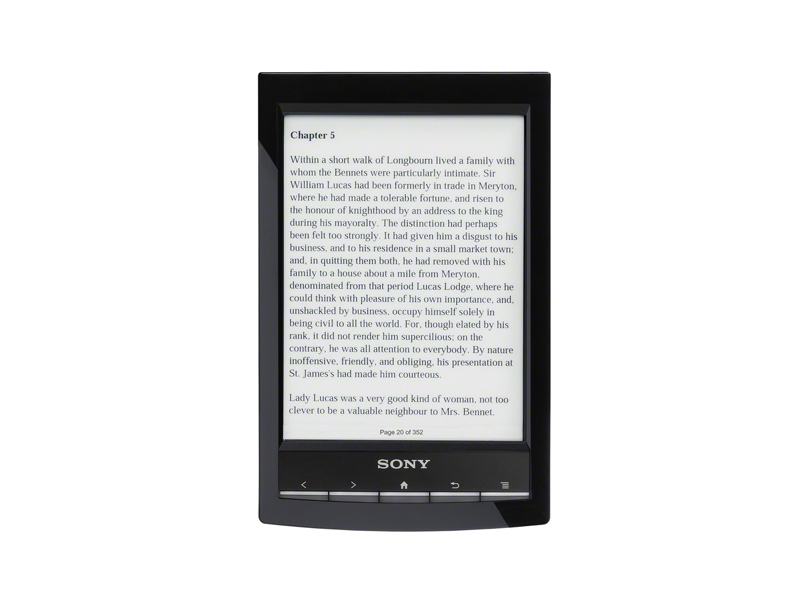Why you can trust TechRadar

The two stand-out specs on the Sony Reader are the light weight and the thin design. As a sleek ebook reader, the Reader stands its own against the Kindle 4 just fine. However, many of the extra features for borrowing books from the library, loading Google Books, and browsing the Web are hard to use. They pale in comparison with the quick touch access of any Android tablet.
Screen flicker became such a problem that we decided to avoid some features after testing them out. For example, at TechRadar.com, we wanted to check a review but the images tended to flicker.
We played music files in the background, but worried that we were chewing up battery power too fast. You can load pictures on the Reader, and we did, but the greyscale screen was not well suited to photos. As an image loaded, the screen would flicker in and out – hampering the overall experience.
The Sony Reader also supports music playback, but there are no external speakers, so you have to use a headphone or connect the device to external speakers. The processor should have been fast enough for basic Web browsing, reading books, and viewing photos but the screen tech caused too much flicker to make those features seem like they were working fast and made them less useable.
We liked
Entry-level ebook readers like the Sony Reader provide one basic function: reading books. As such, this light and thin model is well suited to book lovers. The Reader is just a hair lighter than the Amazon Kindle 4.
The Wi-Fi connection stayed consistent and worked properly. We had no trouble ordering and downloading books, and the Web sites we visited generaly appeared quickly (even if the photos flickered annoying). The headphone jack worked well for listening to music.
There's a microSD slot you can use for adding microSD cards up to 32GB each. The Reader lets you load PDF files, music, and photos but won't play video files. The device lasts for a month on one charge; buttons below the screen were easy to use. The device feels durable and looks stylish.
Sign up for breaking news, reviews, opinion, top tech deals, and more.
We disliked
The E-Ink Pearl technology is superb for reading books and long battery life, but on the Sony Reader the screen flickered more than we would like. When there are options like the Samsung Galaxy Tab 8.9, with a tremendously clear and bright color screen, the Reader's flicker becomes even more of a negative.
The UI for the Reader is clear enough, but the extra features are hampered by screen flicker. Sure, you can call up a Web site easily on the browser, or check out books from a local library, but when the screen flicks to black after every click, you start to prefer an Android tablet quickly.
At times, the Sony Reader did not appear to be registering some finger presses; in reality, typing worked fine and was accurate, but there are no haptics to give a sensation of touch, and we at least felt the screen input felt imprecise even as we learned to trust that the touches were registering.
To read books on your PC, you have to download and install a desktop app – there is no Web app. The long-lasting battery life is great, but the charge does not last as long if you play music files. There is no 3G connection for impulse purchases when you are not near a Wi-Fi hotspot.
Verdict
The Sony Reader PRS-T1 is about the same weight as the much cheaper Amazon Kindle. We found that, for basic book reading, the Reader is a good option because the only time you'll notice any screen flicker is when you access the extra features such as the web browser
Pricing of ebooks matches what you will find in the Kindle store.
But if you venture away from basic reading, the Amazon Kindle is a better choice - it is just as light, cheaper, and offers a wider selection of books. Also, the Kindle offers more storage space for books - about 2GB compared to the Reader's 1.3GB.
Follow TechRadar Reviews on Twitter: http://twitter.com/techradarreview

John Brandon has covered gadgets and cars for the past 12 years having published over 12,000 articles and tested nearly 8,000 products. He's nothing if not prolific. Before starting his writing career, he led an Information Design practice at a large consumer electronics retailer in the US. His hobbies include deep sea exploration, complaining about the weather, and engineering a vast multiverse conspiracy.
